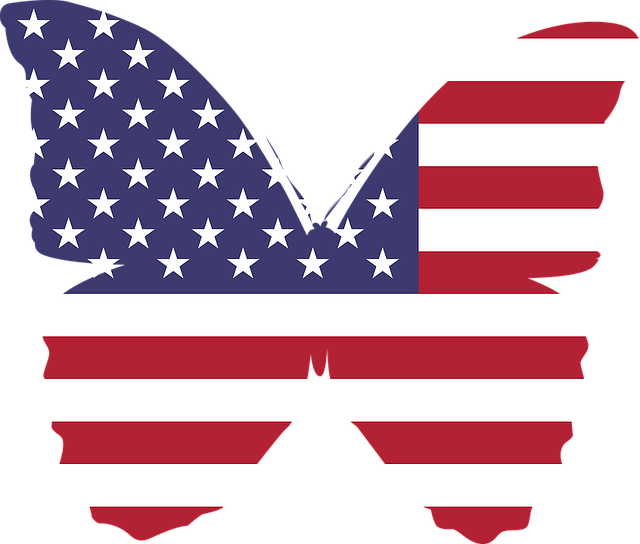This article section provides a comprehensive guide on respectfully displaying and handling the U.S. Flag, emphasizing adherence to the U.S. Flag Code as a way to honor its historical and cultural significance. Key points include not flying the flag upside down unless during an emergency, avoiding using it for decoration or as a backdrop in photos, ensuring it is displayed at full staff, and never allowing it to touch the ground. Proper etiquette dictates raising and lowering the flag ceremonially at dawn and sunset, displaying it with the union (the blue field with white stars) at the top and to the flag's own right when flanked by other flags. The flag should not be used for mundane purposes like clothing or merchandise, nor should it be allowed to fade or become tattered without being retired with respect. Retirement can be done through a private ceremony, and local organizations such as American Legion posts or Boy Scout troops can assist with proper disposal. By following these guidelines, you can ensure the U.S. Flag near you is treated with the reverence it deserves, maintaining its status as a powerful symbol of American unity and pride.
navigating the nuances of U.S. flag display can be a point of pride and patriotism for many. This article serves as a definitive guide, elucidating the protocols and etiquette that govern the proper display of the American flag. From understanding the symbolic gestures to knowing how to care for and respectfully retire your U.S. Flag near you, our comprehensive guide ensures that every flutter of Old Glory in the wind is a testament to its enduring significance. Whether you’re seeking to honor the flag locally or maintain its integrity through proper care, this resource provides clarity on the do’s and don’ts of U.S. flag etiquette and disposal.
- Understanding the Protocols of U.S. Flag Display: A Comprehensive Guide
- The Do's and Don'ts of U.S. Flag Etiquette When Displaying Locally
- Proper Care and Disposal of the U.S. Flag: Honoring Its Significance
Understanding the Protocols of U.S. Flag Display: A Comprehensive Guide

When displaying the U.S. Flag, adherence to established protocols is a mark of respect and acknowledges the significance of the emblem. The proper display of the flag involves specific guidelines that ensure it is shown with dignity and honor. One key consideration is the flag’s position in relation to other flags; the U.S. Flag should never be placed lower than another nation’s flag, nor should it be used as a decoration or drapery on a vehicle, building, or as part of a lobby display. When flown at the same height as other flags, the U.S. Flag should be positioned to its own right, with its own flagpole.
To locate a U.S. Flag near you that is being displayed in accordance with these protocols, whether for personal use or for public display, it’s important to seek out reputable suppliers who understand and follow the guidelines set forth by the U.S. Flag Code. This code, which dates back to 1923, provides instructions on how to show respect for Old Glory through proper etiquette. For instance, the flag should be aired daily, weather permitting, if possible, and at the peak of its staff when displayed from sunrise to sunset. At night, it should be illuminated and its union (the blue field with 50 white stars) should always be at the top or “flagpole end.” By following these guidelines, you contribute to a tradition of respect for the U.S. Flag that has been upheld by countless Americans throughout history.
The Do's and Don'ts of U.S. Flag Etiquette When Displaying Locally

When displaying the U.S. Flag, adherence to established etiquette is paramount for respect and patriotic significance. The flag should be hoisted briskly at dawn and lowered ceremoniously at sunset. It must never touch the ground or floor. When the U.S. Flag near you is displayed horizontally or vertically against a wall, the union (blue field with 50 white stars) should be uppermost and to the flag’s own right. If the flag is in dwellings, not normally the case, or against a wall in a public building, it should hang flat against the wall and its full width should be displayed if possible. The flag should not be used as a covering for objects or as a receptacle for receiving, holding, carrying, or delivering anything. It should not be embroidered on cushions or handkerchiefs, nor printed on paper napkins or boxes. When the flag is draped over a casket, it should not be folded, but allowed to fall freely with the union at the head and over the left shoulder. In all these circumstances, the proper respect for the U.S. Flag near you is demonstrated through adherence to its etiquette, ensuring the flag remains a symbol of national unity and pride. Remember to follow local, state, or federal codes when displaying the flag, as certain regulations may apply during specific times or events.
Proper Care and Disposal of the U.S. Flag: Honoring Its Significance

When displaying the U.S. Flag with respect and dignity, proper care extends beyond its presentation. The flag should be made of all new cotton or all-weather polyester bunting. If the flag becomes tattered, frayed, soiled, or worn, it no longer represents the nation properly and must be repaired or replaced. When a flag is in such condition that it cannot be made whole, it is an act of patriotism to retire it in a dignified manner. The proper care for the U.S. Flag near you includes washing by hand in cold water and air drying, as dry cleaning or hot water can damage the fabric. If the flag is beyond repair, its disposal should be done with ceremony. This can be done by burning it in a dignified, private ceremony. The Flag Code suggests that local community organizations such as American Legion posts or Boy Scout troops provide proper flag disposal services. Honoring the flag’s significance through meticulous care and respectful disposal ensures that it remains a symbol of our nation’s values for generations to come. Remember to consult local regulations for specific procedures on flag care and disposal, as they may vary by area.
